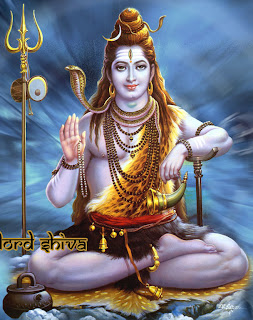In Hinduism, Lord Shiva is the god of all gods. He is amongst three Trinity gods who is regarded as destroyer god. He is the superior god among the trinity gods Bramha and Bishnu.
Lord Shiva is described as the one who has long hair, wearing necklace of snake. He is believed to wear clothes of tiger's skin and carry Trishul as his weapon.
It is believed that Lord Shiva live in Himalaya known as Kailash Parvat which is believed to lie in the mountain region of Nepal.
The tales of Lord Shiva is found in Purans (ancient old books of Hinduism). He is called by chanting the mantra "Om Nama Shivaya". His other names are "Kailash Pati" means to owner of Kailash, Mahadev etc. He has a wife goddness Parvati and two sons, Kumar and Ganesh. They are also very respectful gods in the Hinduism.
Some of the pilgrimage Lord Shiva in Nepal are Pashupati Nath Temple in Kathmandu, Goshaikunda in Rasuwa etc.
Lord Shiva is described as the one who has long hair, wearing necklace of snake. He is believed to wear clothes of tiger's skin and carry Trishul as his weapon.
It is believed that Lord Shiva live in Himalaya known as Kailash Parvat which is believed to lie in the mountain region of Nepal.
The tales of Lord Shiva is found in Purans (ancient old books of Hinduism). He is called by chanting the mantra "Om Nama Shivaya". His other names are "Kailash Pati" means to owner of Kailash, Mahadev etc. He has a wife goddness Parvati and two sons, Kumar and Ganesh. They are also very respectful gods in the Hinduism.
Some of the pilgrimage Lord Shiva in Nepal are Pashupati Nath Temple in Kathmandu, Goshaikunda in Rasuwa etc.

















































